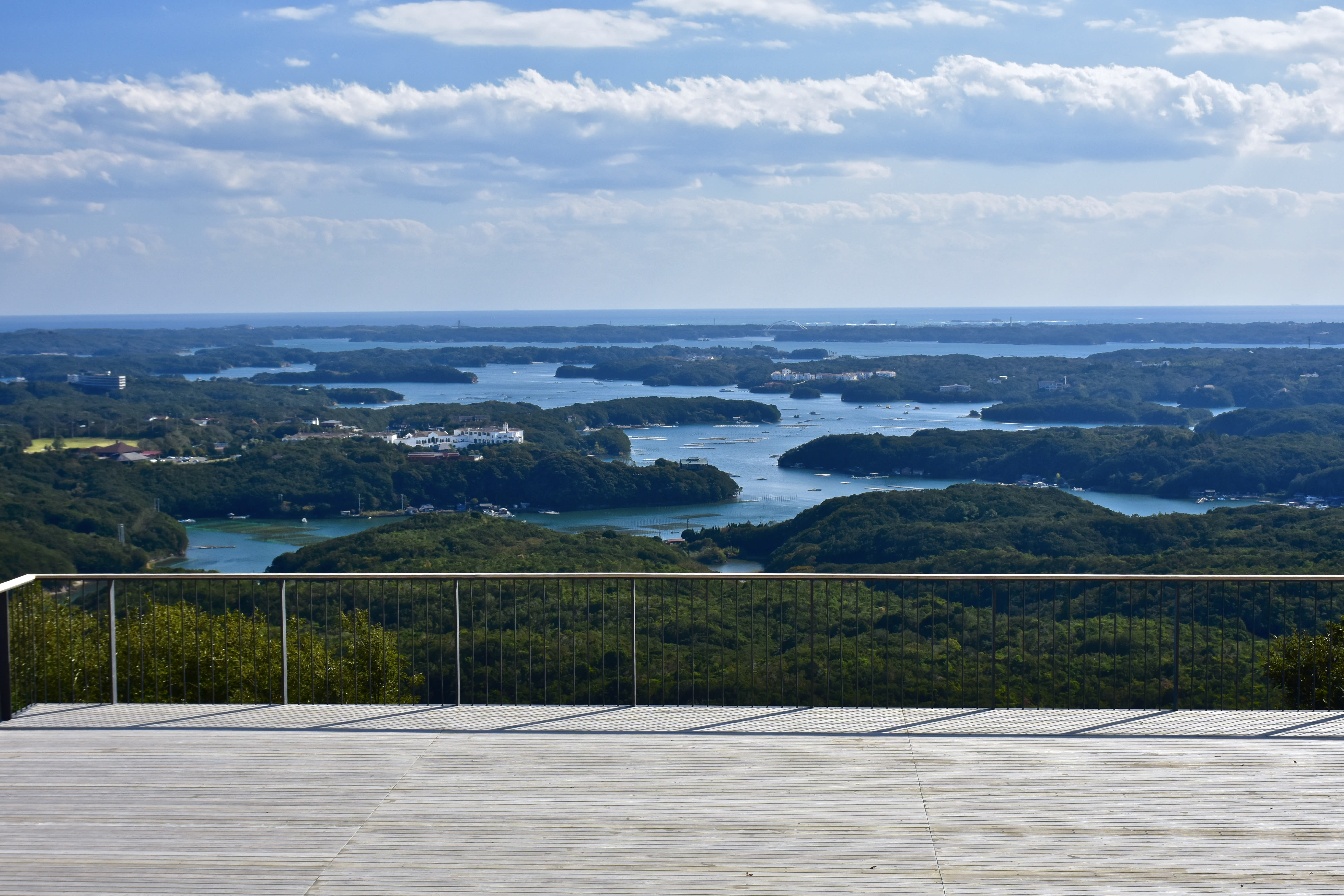Ise Area
The heart of the area is Ise Jingu, a complex of 125 jinja (Shinto shrines) with a history stretching back 2,000 years. The shrine is dedicated to the worship of Amaterasu Omikami, the mythical sun deity. Guided tours can tell you more about the ancient architectural style of the Naiku (Kotaijingu) and the Geku (Toyo'uke-daijingu), as well as the traditional food and crafts of Oharaimachi, the street lined by attractive wooden buildings along the approach to the Naiku.
The Isuzu River flows to the inner shrine, while Kyuikirin, a sacred forest, stretches up into the mountains from the inner shrine. These wooded slopes provide some of the timber for rebuilding the shrine, which occurs every 20 years.
Further east is Mount Asama, Ise-Shima National Park's highest peak (555 m). From the mountain's observatory, you can look across the glittering waters of Ise Bay toward Mount Fuji.
Down on the coast you'll find Meotoiwa Rocks, another of the park's iconic sights. Part of Futamiokitama Shrine, these "wedded rocks" sit away from the shore, a sacred rope connecting the two, with a delicate torii (shrine gate) perched atop the larger one. The sight is especially captivating from May to July, when the sun rises between the rocks.
Toba Area
Four of Toba Bay's islands are inhabited and have beautiful sites, from jagged karst rock formations of Kamishima to island fishing villages. You can also view the islands from the nearby Toba Observatory on Pearl Road or get a closer look by heading out with local fisherfolk.
Follow the coast south toward Matoya Bay and you’ll reach Osatsu, a fishing community that has the most ama divers of any town in Japan. These women dive without breathing equipment to collect seafood such as shrimp, seaweed and abalone. Book a spot on the Ama Hut Experience, to chat with ama divers and learn more about their traditions (and feast on mouth-wateringly fresh seafood).

Meotoiwa Rocks
Shima Area
The Kinki Nature Trail starts north of Shima on Cape Anorisaki, where Anorisaki Lighthouse keeps those on the waters safe. The trail winds along past some lovely coastal scenery, with hamayu (Crinum asiaticum L. var. japonicum), commonly known as spider lily, springing up by the path in places. First it passes the wide white crescent of Kou-Shirahama, then a beach backed with pine trees at Ago-no-Matsubara. Further south at Ichigohama, loggerhead turtles come ashore to lay their eggs. There are good camping options nearby, too.
The trail continues to Cape Daiosaki, and further down along the coast to the Kumanonada Sea. The rocky shores, sheer cliffs and ledges here are the perfect habitat for a range of seabirds, from Pacific reef herons and Japanese cormorants to small blue rock thrushes, streaked shearwaters and ospreys. The town of Daio, meanwhile, features a popular walking tour through the town.
From Cape Daiosaki, other hiking routes head on around the narrow Sakishima Peninsula, past the fishing port of Wagu—where the annual Shiokake Festival takes place—and you can meet ama and even dive with them. The route goes on to Goza, which has a good swimming beach at Goza-Shirahama Beach.
The indented coastline of the Sakishima Peninsula marks the southern side of Ago Bay, dotted with small islands and gently bobbing aquaculture rafts. At Tomoyama Park, both the viewpoint and the well-equipped campsite offer broad views across the bay.
The best way to see it, though, is weaving between islands in a kayak or canoe, or a sightseeing cruise.
Yokoyama, to the north of the bay, has several viewpoints looking out across the forested islets and blue waters; the highest, Miharashi Observatory, offers the most panoramic vistas and bright azaleas blooming in summer. Enjoy the view along with a snack and drink at Yokoyama Observatory's Tenku (Sky View) Café Terrace. Shima, a little way inland, is a pleasant town well worth a visit. Try your hand here at making jewelry from the region’s famous pearls.
Minami-Ise Area
Where the Iseji River flows into Gokasho Bay, pastel-yellow hibiscus flowers (Hibiscus hamabo) grow on sandbars, adding delicate color to the coastal scene. To the southwest, Nankai Observatory offers views of the islets in the bay, and across to the mountains of Kakuro, Ryusen and Sengen. You can tour the bay in a fishing boat from Asoura Bay. Further west, Mieshima Observatory at Ugura Picnic Site is another great spot for views of the coastline, directly overlooking a heart-shaped inlet.

Yokoyama Observatory
Culture
With Ise Jingu at its heart, Ise-Shima National Park is steeped in Shinto traditions. Every year, several festivals are held at the shrine, such as Kannamesai (in October) to celebrate the rice harvest, and the Kagura festivals (April and September) which involve performances of sacred dances.
Ise-Shima’s complex coastline and combination of warm, shallow coastal waters (ideal for seaweed beds and aquaculture) and access to the Pacific Ocean mean fishing has always been part of life here. The most famous are the ama, female divers who collect seafood such as abalone and sea urchins by hand and without any breathing equipment. There are over 600 ama divers still working in Mie.
The importance of fishing to the area is celebrated every June in the 800-year-old Shiokake Festival, which ends with participants spraying each other enthusiastically with seawater.


